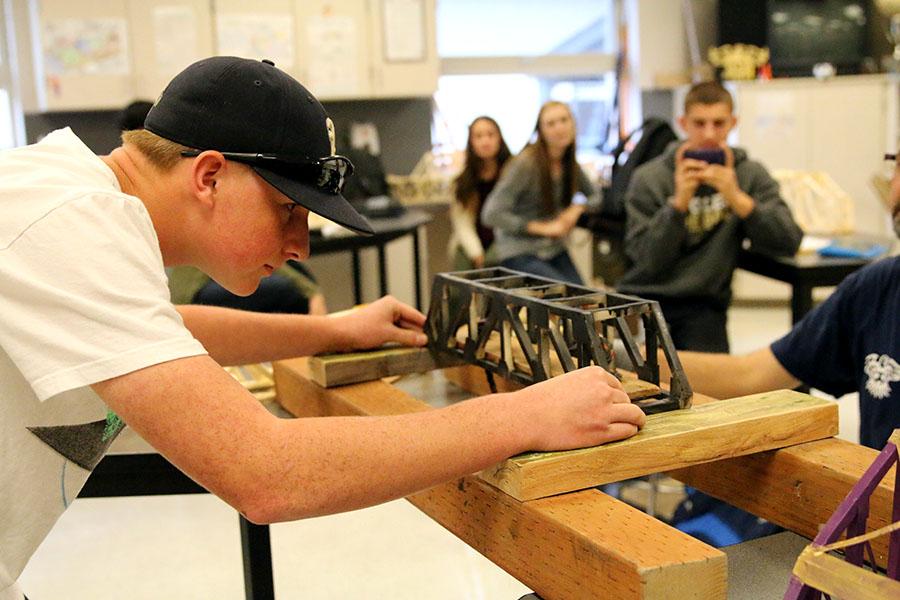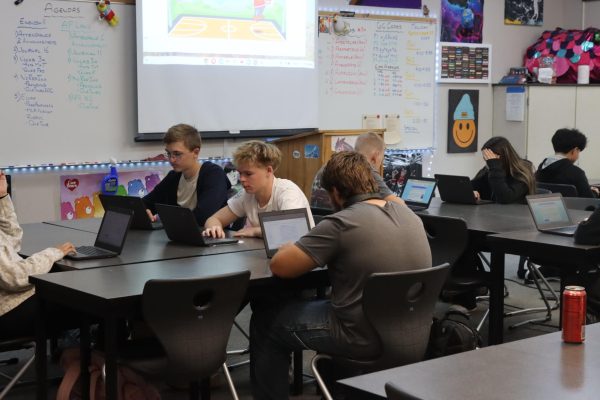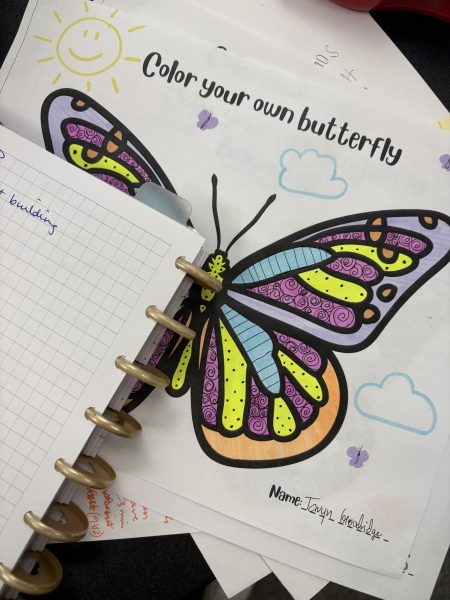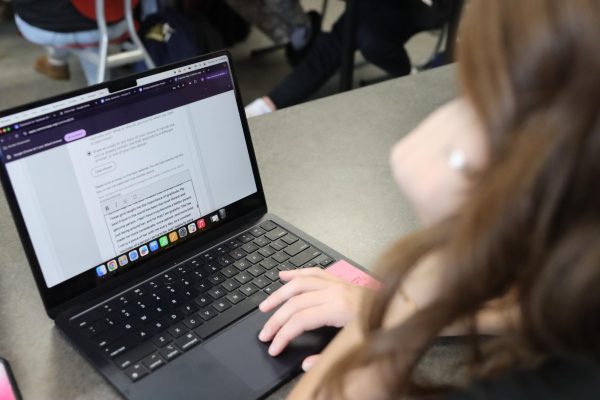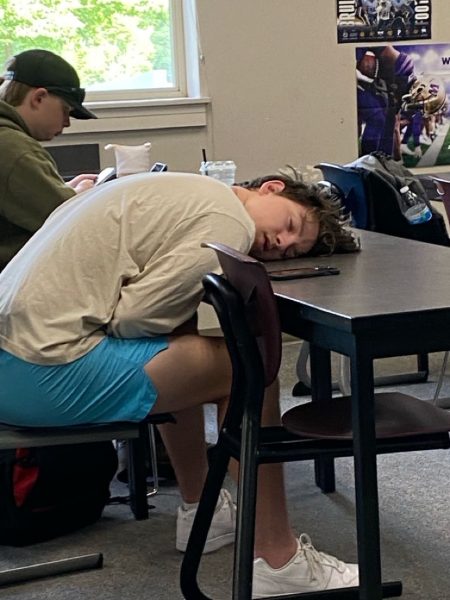The Experimental Types
Sophomore Isaiah Mitzelfeldt prepares his bridge to support the weight of dampened sand to test the structural integrity of the bridge.
The multiple branches of the science department allow students to be able to choose among multiple science classes to their own liking. The teachers, such as Mike Liles, put forth opportunities for juniors to enroll in the Washington Aerospace Scholars, an aeronautics-physics type of class where students enroll in an online course and earn college credits in science through the University of Washington. Those students who excel in the program go to the second phase of the course, where they visit the Museum of Flight in Seattle to participate with other Washington Aerospace Scholars. They conduct experiments that relate to the course that they took, bringing the concepts of what they learned into reality.
In addition, a new course has been introduced to the Arlington High School science department. A.P. Environmental Science provides an opportunity for students to pursue ecological fieldwork, take note of economic and environmental impacts of the mass production of products, and many other related activities and research. The course is taught by Haifa Iverson, who interacts with the enrolled students to help teach multiple concepts regarding environmental sciences. At the moment they have a long-term experiment observing the cycle of the butterfly.
Not to mention Biology, an animal and plant based science. Students in the class are currently learning about scientific ethics in regards to conducting experiments on animals and studying the behavior of mealworms in a controlled environment. These kinesthetic labs and conceptual ideas exemplify the impact of Biology.
On the other hand, Chemistry is celebrating “Mole Day” on October 23rd because of the mathematical and scientific significance. The significance being that a mole is a unit expressed as 6.02×10^23, and 10^23 being October 23rd. An experiment the A.P. class has been carrying out is the analysis of Red Dye #40 over a week-long period. The dye is common throughout products and food, and has been recognized as a cultural hysteria.
Physics students have taken part in two experiments recently, including constructing a bridge from three manila folders and calculating the path of a hot-wheel car down a ramp and off of the table into a hoop without any practice trials. The bridges varied in design, pattern, and structure, all proving to have different levels of efficiency. For the hot-wheel projectile experiment, students applied the knowledge they have been learning to help accurately predict the flight path, speed and velocity of the car when encountering these obstacles of accuracy and precision.
The Science Department as a whole has diverse approaches to the multiple areas of general sciences the school has to offer, and provides a learning environment in which students can pursue their scientific interests.



